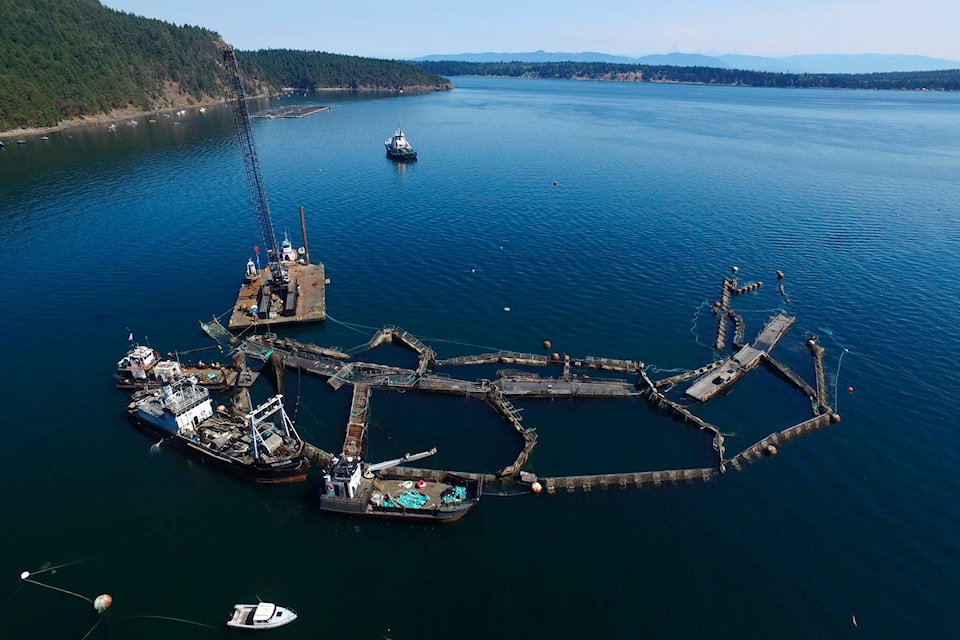With the calendar changing from 2022 to 2023, the future of the aquaculture industry off the coast of British Columbia faces some murky waters going forward.
In 2019, the Department of Fisheries and Oceans (DFO) released the government’s commitment to shifting strategy toward a “blue economy”, with the federal government’s plan to phase out open pen fish farms by 2025 coming just a year later.
After a federal court overturned the decision this past spring, DFO announced the shift to a transition plan away from open net fish farms, with the framework to be announced in the coming spring.
In a statement, the BCFSA (BC Salmon Farmers Association) said they are committed to a “First Nations-led BC salmon farming sector founded upon an inclusive, ecosystem approach to management that progressively enhances the sector’s environmental performance,” adding that “we have been transitioning for decades through the development of cutting edge technologies and innovations to continuously reduce our impact on the environment.”
Technologies, which could include the transition to recirculating aquaculture systems (RAS) — a process where the water is recycled and reused after mechanical and biological filtration, with metabolites and other matter removed. However, whether the move from coast to land happens comes down to one important thing: the cost.
“The transition to recirculating aquaculture systems on land’s financial viability has not been proven,” says BCFSA Executive Director Brian Kingzett.
“These systems are more efficient with smaller fish and hybrid systems where fish are grown in RAS to a large size before being moved to the ocean may be part of the solution.”
Gold Fish Aquafarms, which just received a licence from the DFO in November, is overseeing a nearly $100 million project involving RAS systems in Gold River. President and CEO Rob Walker says he has been overseeing the planning for the project for three years.
After it breaks ground in 2023, it will be 18 months before the project will be fully functional.
“We’re using a mixed call raceway. It’s a long trough, water goes in one way and out the other. Water is recirculated, sent to the treatment so it gets cleaned.
“We’ll hatch the eggs, to the nursery, eventually to juvenile raceways, then eventually to harvest size.”
Building on a former pulp and paper mill site, Walker says it has saved about 15 per cent of start up costs. Walker says that this transition, although it may be daunting, will be vital to the future of both the ocean and the industry.
“The big companies have been doing research for many years for alternatives,” said Walker. “It’s very capital intensive and that’s a huge challenge. The federal government’s mandate is to get it out of the water and to protect the ocean.
“The ocean isn’t in good shape, and it’s unpredictable. You never know when the next storm or algae blooms. While there are still risks with this, the risk is manageable.”



